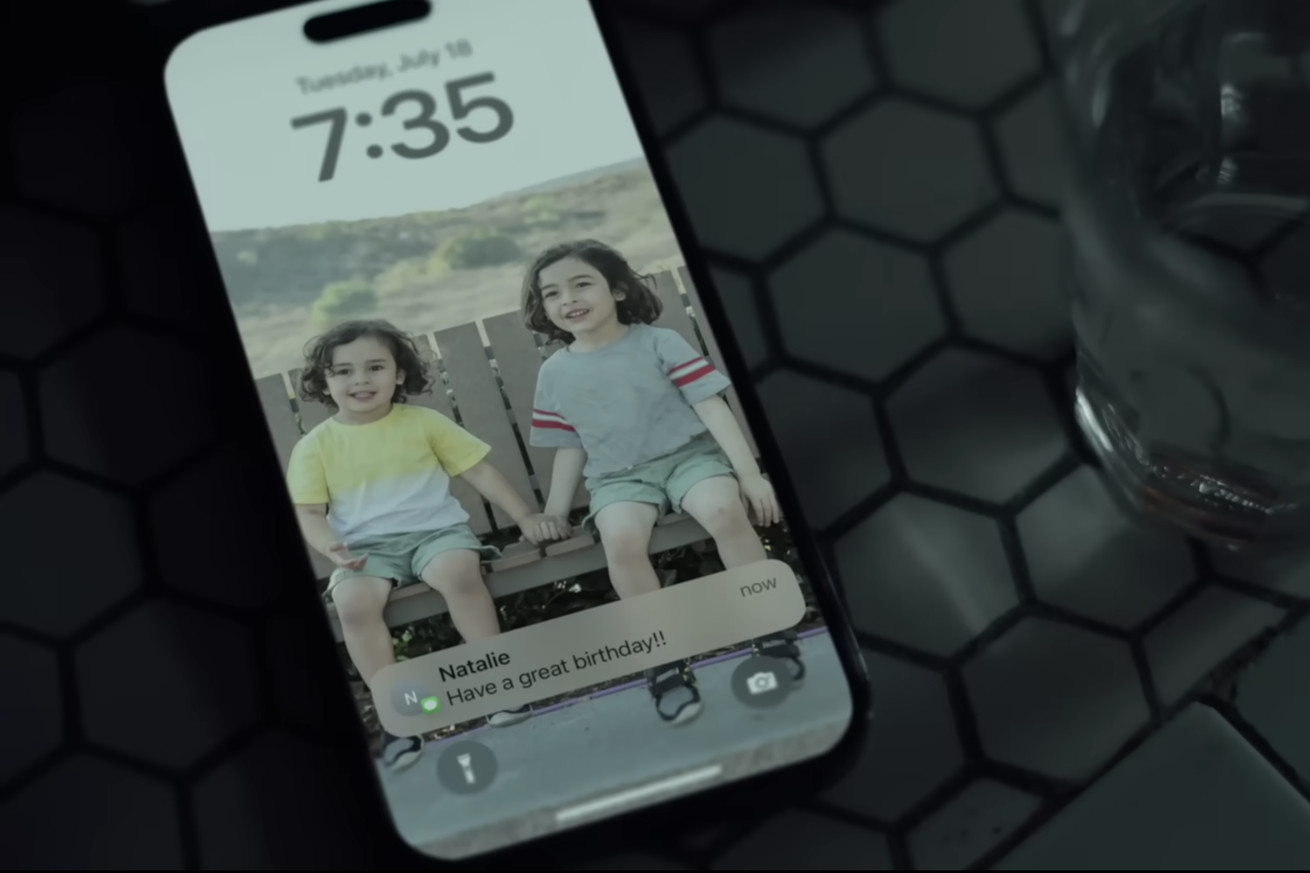
In recent years, Apple’s presentations have started to feature a new type of messaging: without an Apple Watch, you might be mauled by a bear, drown inside a sinking car, get stuck in a trash compactor, or even succumb to hypothermia after falling through an icy lake.
These disasters have always been averted by the presence of an Apple Watch. But this year, Apple’s messaging has started to change again: it’s not just the Apple Watch that can save you from possible death — but the iPhone, too.
At Apple’s iPhone 15 showcase, the company opened with an ad that weaved together the lifesaving potential of both the Apple Watch and the iPhone. The video depicted people celebrating their birthdays with friends and family, blowing out candles, and of course, getting “happy birthday” wishes on their iPhones.
As the ad introduced its main players, captions faded in at the bottom of the screen, such as one that said, “Apple Watch notified her of a low heart rate. Went to the hospital and received vital pacemaker surgery.” The next described a person using the iPhone’s Emergency SOS feature to get rescued while trapped in a blizzard, while another said a pregnant woman was rushed to the hospital for an emergency delivery after her Apple Watch detected a high heart rate.
These follow recent ads from Apple showing how an iPhone 14 might save you if your car rolls over or you’re stranded on top of a mountain.
The ads aren’t exactly wrong: there are dozens of real-life reports about people getting saved thanks to their iPhone or watch. After rolling out Emergency SOS to its Apple Watch in 2016, the company added fall detection, an electrocardiogram, and even a blood oxygen sensor. Last year, Apple touted a new Crash Detection feature for the Apple Watch and iPhone 14, which automatically alerts emergency services when it detects you’ve been in a car crash (or are just on some wild rollercoaster ride). And last year, Apple added a feature to iPhones that let users contact emergency services over satellite in case there’s no cellular connection.
These are undeniably great features, but there’s a reason Apple’s approach to advertising them has a tendency to make us uncomfortable: they sell us a product using concern for our own mortality — buy an Apple device or risk your life. They’re ads that play off fear rather than hope, and they stand in stark contrast to the ads that Apple used to release about its devices. A watch ad from two years ago shows people happily using their Apple Watch to improve their fitness; an early watch ad shows people using the device to connect with loved ones.
There might be a reason for this shifting approach. Features like fitness tracking and connectivity on your wrist no longer help the Apple Watch stand out among the competition.
Rivals like Samsung’s Galaxy Watch 6 and Google’s Pixel Watch have caught up to the Apple Watch in terms of health-tracking sensors, but they still haven’t added Crash Detection. The same goes for the iPhone. Apple might’ve only just added USB-C and periscope cameras, but Android phones still don’t have satellite connectivity (though it’s likely coming soon). Not only that but the addition of new safety features, including satellite connectivity, Roadside Assistance, and Crash Detection, helps differentiate Apple’s newer devices from its older ones, potentially giving users a good reason to upgrade.
On Tuesday, Apple revealed yet another reason why we might want to have our Apple devices with us at all times: Roadside Assistance. The service, which is compatible with the iPhone 14 and later, lets you contact AAA via satellite in case your car breaks down in the middle of nowhere. While Apple doesn’t pose some catastrophic scenario in which you might need to use Roadside Assistance, I wouldn’t be surprised if we see one depicted in an ad sometime soon.
These safety features have the potential to be moneymakers for Apple, too. Apple’s services sector raked in record revenue last quarter thanks to its over 1 billion paid subscribers to Apple Music, TV Plus, iCloud Plus, and its bundled Apple One service. Soon, this list of services will include Apple’s satellite connectivity and Roadside Assistance features, as the company’s satellite service is only available for free to iPhone 14 users for two years, and it’s offering the same promotion for Roadside Assistance on the iPhone 15.
We still don’t know how much Apple will make users pay after that trial period, which will come to an end for iPhone 14 users next year. But Apple seems confident that, once it has a customer, they won’t put these devices down. “They’re with us all the time,” Apple CEO Tim Cook said when talking about the watch and iPhone. “And if you left either one at home, I bet you’d go back and get it.” When your life depends on it, who wouldn’t?

Aucun commentaire:
Enregistrer un commentaire